
Aurora Winslow
About the Author
Aurora Winslow is a respected grader at Heritage Numismatic Services and simply a coin lover who strives to create a safe space for collectors to trade and evaluate their coin collections. As a member of the American Numismatic Association (ANA), Aurora has spent more than ten years assessing and certifying ancient currencies from all over the world. However, her passion remained consistent: it was all about 1-cent coins – those small metal plates with immense worth to hold.
Grading is a complicated process that requires patience, concentration, and attention to detail. It was her element – a meticulous form of art that was spinning around the subtle differences in strike, luster, wear, and authenticity. To gain her expertise, Aurora earned certifications from reputable grading services, which allowed her to professionally evaluate coins according to industry standards.
As of now, this is a matter of global education: Aurora shares her insights regarding peculiar numismatic creations and her professional background, which can be interesting to her colleagues. Today, we are pleased to present her latest most valuable pennies list. Enjoy!
Follow Aurora on Social Media



The Worth of One Cent
The numismatic sphere is indeed full of peculiar creations that captivate collectors with their one-of-a-kind errors, exclusive designations, outstanding issues, and other anomalies that do not correspond to the general principles and standards. Nevertheless, pennies, the smallest current denomination in the US, are frequently neglected, and their unique variations may be left unnoticed, however valuable and appealing these may be.
In fact, the history of 1-cent coins is rather diverse and captivating. There were released numerous designs that vividly reflect their epochs and timelines. Having been introduced in 1787, it underwent significant changes in terms of its appearance and composition, not to mention. However, just like other coins, the cent could not escape the fate of being accidentally misstruck or involuntarily altered. This is how the most valuable US pennies were born.
So, which dates to look for, what year pennies are most valuable, and how to identify errors that boost their value for good?
1-Cent Designs: Large Cents vs Small Cents
| LARGE CENTS | SMALL CENTS | ||
| Type | Design | Type | Design |
| Flowing Hair Chain (1793) | Liberty with flowing hair; chain on reverse | Flying Eagle (1856–1858) | Flying eagle in flight; wreath reverse |
| Flowing Hair Wreath (1793) | Similar obverse; wreath on reverse | Indian Head (1859–1909) | Liberty in Native American headdress |
| Liberty Cap (1793–1796) | Liberty with a cap on a pole | Lincoln (1909–present) | Portrait of Lincoln, reverse varies |
| Draped Bust (1796–1807) | Stylized Liberty bust | Lincoln Wheat (1909–1958) | Wheat ears flanking the denomination |
| Classic Head (1808–1814) | Liberty with ribboned hair | Lincoln Memorial (1959–2008) | Lincoln Memorial building |
| Coronet (1816–1839) | Liberty with coronet | Lincoln Bicentennial (2009) | Four designs showing Lincoln’s life |
| Braided Hair (1839–1857, 1868*) | Refined Liberty with braided hair | Lincoln Union Shield (2010–present) | Shield with scroll design |
What Are the Most Valuable Pennies Right Now? Let Us Check
1856 Flying Eagle Cent
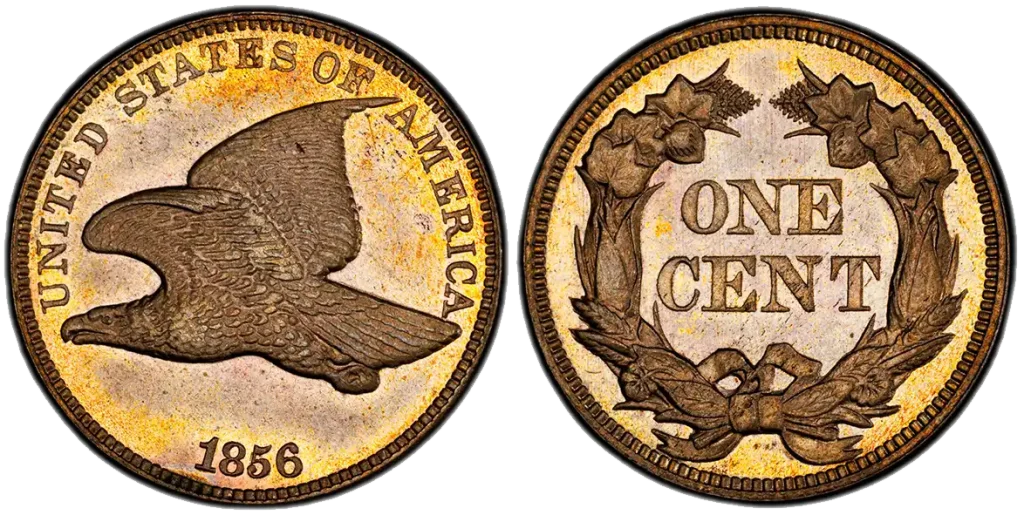
Produced by: Philadelphia Mint
Mintage: Approximately 634 (estimates vary due to restrikes)
Composition: Copper-Nickel
Auction Record: $172,500 for an MS66 example
The most valuable pennies? These are definitely those that were minted many years ago. The 1856 issue is an iconic piece in American numismatics, which was struck as a presentation coin before the official launch of the small cent. To be more precise, it was a major shift from the larger copper cents to smaller, more convenient units of currency.
Although it is technically a pattern, the members of Congress and other dignitaries, as well as non-official enthusiasts, obtained it in order to keep it in private collections as the first coin in the series. Nonetheless, some pieces ended up in circulation, which made them even more desirable than originally expected. The demand did not create its supply, and the hunt started as soon as the coin was “released”.
1877 Indian Head Penny
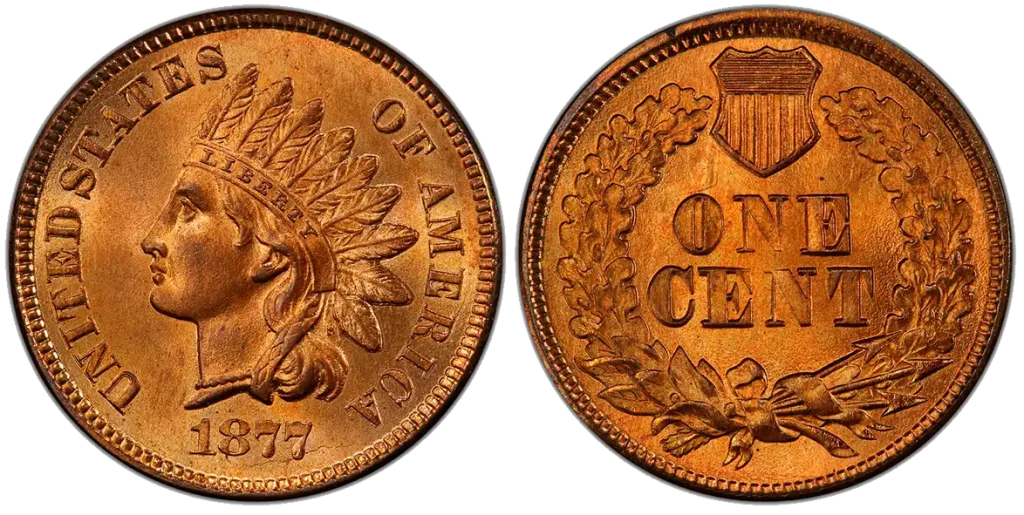
Produced by: Philadelphia Mint
Mintage: 852,500
Composition: 95% Copper, 5% Tin and Zinc
Auction Record: $149,500 for an MS66 example
The 1877 edition is indeed the undisputed key date of the entire Indian Head series and was one of the most desirable coins in the 19th century. Although the mintage figures may seem impressive, it is actually a low number that could not meet the post-production demand and expectations of collectors and those interested in the numismatic field. At the time of the release, though, coins were not in favor due to the past economic hardship brought on during the Panic of 1873.
From then on, this issue was regularly included in the lists of most valuable pennies to look for, as an instance with a legendary status and an almost mythical appeal.
1909-S VDB Lincoln Cent
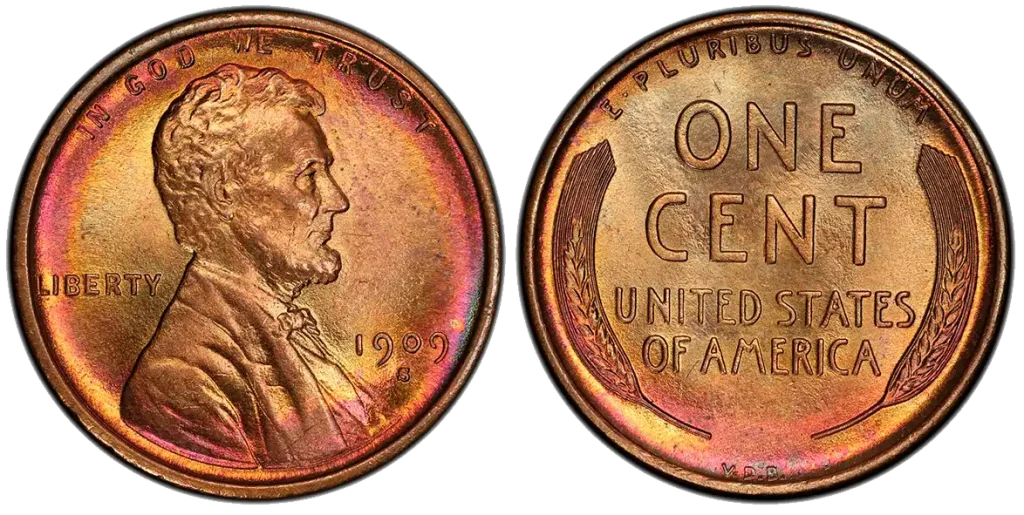
Produced by: San Francisco Mint
Mintage: 484,000
Composition: 95% Copper, 5% Tin and Zinc
Auction Record: $168,000 for an MS67RD example
Among the most valuable Lincoln pennies, one would definitely name the 1909 VDB issue that managed to become an iconic piece because of two major factors, i.e., the controversy over the initials on the reverse and the low mintage that contributed to its popularization. In particular, it was the debut of the Lincoln cent series and the beginning of a new era in American coinage.
What about the initials? As the first representative of a fresh design, the coin bore the initials of its creator, Victor David Brenner, who wanted to leave a mark on the appearance of the coin. However, public backlash led the US Mint to halt production and remove the initials entirely, which is why the latter iterations did not have such a unique trait anymore.
Its fame has not faded, by the way. Jeff Garrett and Ron Guth placed this issue 14th in their influential ranking, 100 Greatest US Coins. Such an honor!
1914-D Lincoln Cent
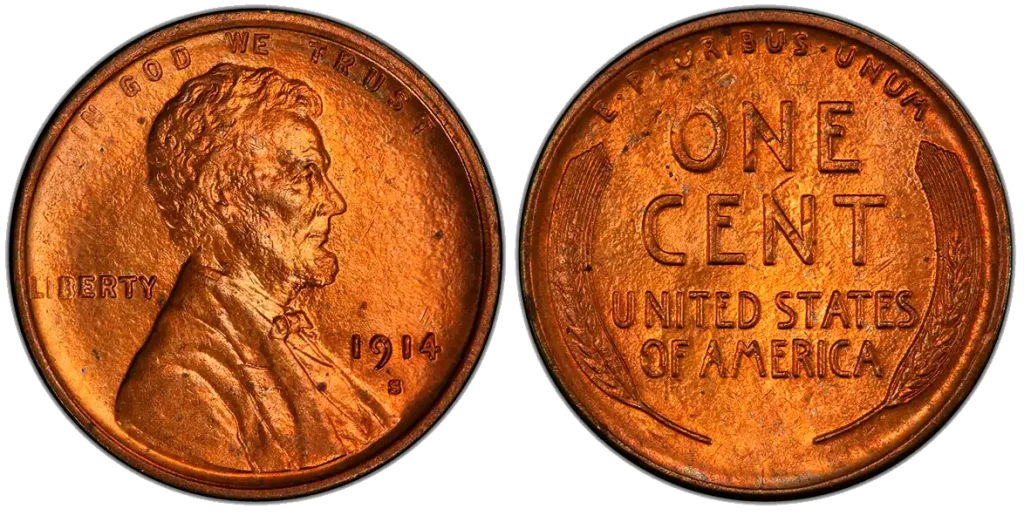
Produced by: Denver Mint
Mintage: 1,193,000
Composition: 95% Copper, 5% Tin and Zinc
Auction Record: $158,625 for an MS66+RD example
Which pennies are the most valuable? Though it might be found in the Lincoln series in large quantities, the 1914 cent is one of the most elusive and worthy coins that may boast a small number of surviving items today. The scarcity of Mint State instances makes it an exceptional piece that may gain thousands of dollars at auction. Anyway, there is nothing special about its history, but the amount of pieces that managed to stay untouched up until these days impresses.
1922 No D Lincoln Cent Strong Reverse
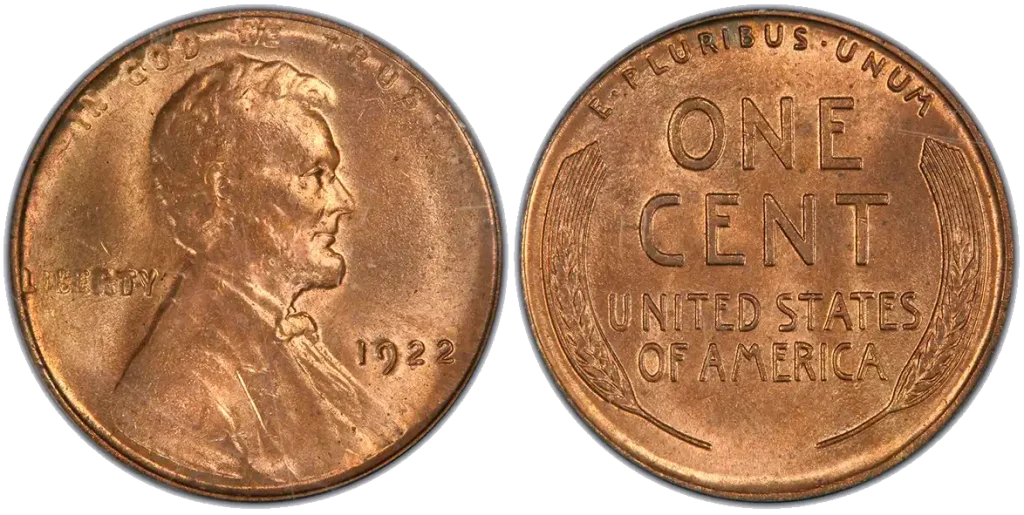
Produced by: Denver Mint (the only mint that struck cents in 1922)
Mintage: 7,160,000 (total for 1922-D cents; No D variety is a small fraction)
Composition: 95% Copper, 5% Tin and Zinc
AuctionRecord: $49,450 for an MS65 example
What pennies are most valuable? The erroneous ones. The 1922 No D 1C is a famous error caused by a worn or clogged die that failed to strike the proper “D” mint mark. During that year, Denver was the only spot responsible for the production of the coin, and the absence of its indicator/label triggered both confusion and fascination among the public. Most No D examples have a weak reverse, but the Strong Reverse variety is far rarer and more valuable.
Besides, it is important to distinguish between bold mint marks, weak “ghost” marks, and coins lacking the mint mark at all. The more completely the mint mark disappears, the higher the coin’s desirability and value.
1943 Bronze Lincoln Cent (Copper)
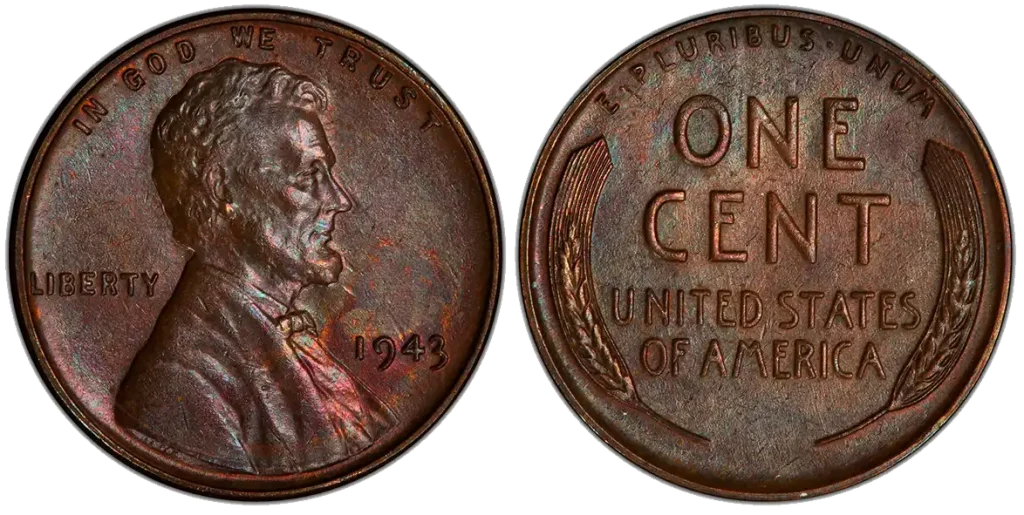
Produced by: Philadelphia Mint
Mintage: Unknown (estimated fewer than 20 genuine examples)
Composition: 95% Copper, 5% Tin and Zinc
Auction Record: $372,000 for an MS62BN example
During World War II, the US Mint made its decision to switch from bronze to zinc-coated steel for cent production to conserve copper for military purposes. The nation was at war, and such an initiative was quite logical. But what wheat pennies are the most valuable? During the production, a few leftover bronze planchets from the previous year were confused with the 1943 ones, creating one of the most famous and valuable error coins in American history.
To identify if your 1943 cent is a genuine piece, try using a magnet. While steel cents will stick due to their iron core, true bronze cents will not. However, if you happen to stumble upon a non-magnetic coin, it might be reasonable to have it professionally authenticated so as not to fall into the trap of counterfeits and fakes.
1944 Steel Lincoln Cent
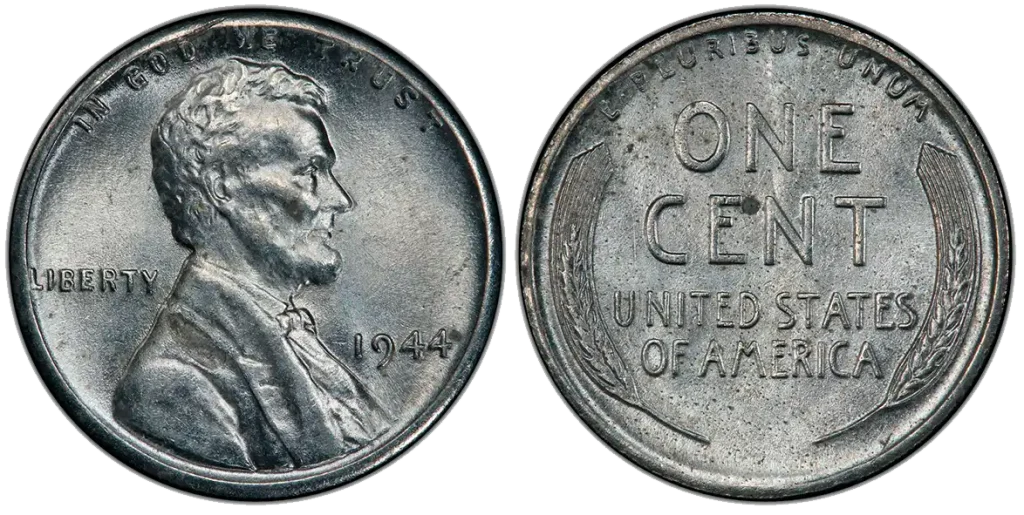
Produced by: Philadelphia Mint
Mintage: Unknown (estimated 25-30)
Composition: Zinc-coated Steel
Auction Record: $180,000 for an MS64 example
1944 presented the opposite error, in turn! It is an unusual off-metal error, created when a steel planchet, either left over from 1943 or intended for a foreign coin, was mistakenly struck during the production of bronze cents in 1944. The origin is blurred, for there deviations might have occurred when stray steel blanks were overlooked during cleanup or accidentally mixed into production bins.
What wheat pennies are the most valuable? Obtaining a bronze 1943 piece and a steel 1944 coin is like winning a lottery for collectors who appreciate errors and key dates.
1955 Doubled Die Obverse
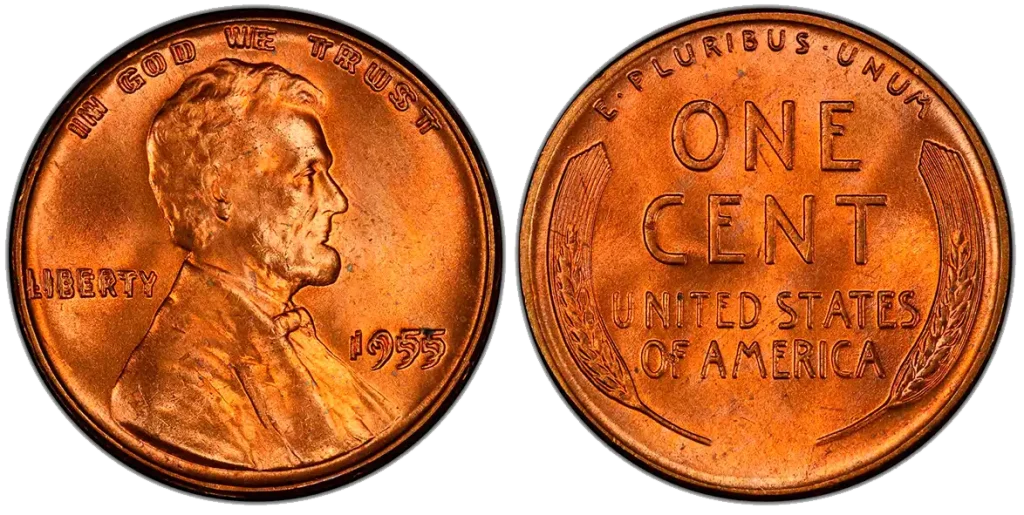
Produced by: Philadelphia Mint
Mintage: 33,058,000 (only a small number shows the doubling)
Composition: 95% Copper, 5% Tin and Zinc
Auction Record: $114,000 for an MS65+RD example
Doubled die obverse errors are usually considered the most common, but their dramatic, recognizable nature makes them equally desirable. What are the most valuable wheat pennies in circulation? Those erroneous pieces released in 1955. The doubling, in fact, is typically caused by a misalignment during die creation and does appear on the date and inscriptions like “LIBERTY” and “IN GOD WE TRUST”, which is noticeable even to the naked eye.
Although over 33 million cents were struck that year, only a small number displayed this doubling, while many entered circulation before the Mint managed to catch the error on time.
1969-S Doubled Die Obverse
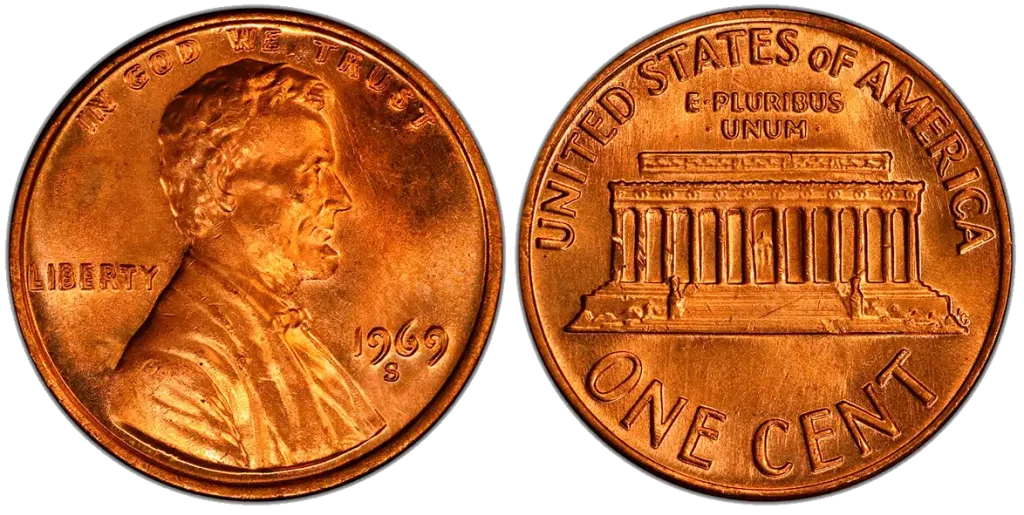
Produced by: San Francisco Mint
Mintage: Estimated 15 known
Composition: 95% Copper, 5% Zinc
Auction Record: $126,500 for an MS64 example
Some errors might not only be rare – these may be at the center of a federal investigation. In 1969, counterfeiters Roy Gray and Morton Goodman produced fake doubled die cents, which prompted a Secret Service raid. Among the evidence were altered dies and coin planchets found. Although most of the 85 fake cents were intercepted before circulation, the incident placed the real Doubled Die error on the government’s radar as a suspected forgery.
Genuine examples are extremely scarce (fewer than 20 confirmed). The doubling is bold and most visible on the date, “LIBERTY,” and “IN GOD WE TRUST,” always excluding the mint mark (for the “S” was added separately).
1992 Close “AM” Penny
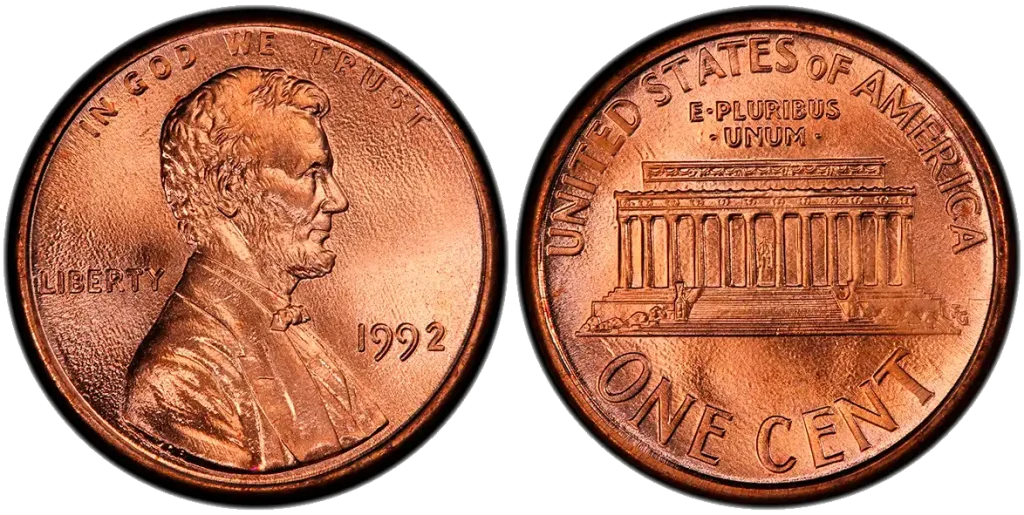
Produced by: Philadelphia Mint
Mintage: 4,648,905,000 (only a small number show the Close AM variety)
Composition: Copper-plated Zinc
Auction Record: $25,850 for an MS67RD example
For collectors seeking coins that consistently rank as worth most valuable pennies by year, the 1992 Close AM variety is a must. Although it might look like any ordinary penny, the spacing between the letters “A” and “M” in the inscription “AMERICA” makes all the difference. A die intended for proof coins was mistakenly used on a small number of regular circulation cents, which is why the “A” and “M” seem to be nearly touching.
Anyway, this deviation is difficult to catch (4.6 billion coins make it even harder to spot!).
Which Wheat Pennies Are the Most Valuable? Tips and Key Features to Spot
- Identify Key Dates and Mint Marks: Look for rare dates (like those mentioned above). Check mint marks (“S” for San Francisco, “D” for Denver, or none for Philadelphia) to look for the mintage figures and determine their rarity.
- Spot Errors and Varieties: Watch for doubled dies (DDO or DDR), off-center strikes, missing mint marks, or unusual compositions like the 1943 bronze or 1944 steel cents.
- Check Condition: Coins in better condition (Mint State in particular) are more valuable. Use a magnifier to inspect wear and avoid cleaned or damaged coins.
- Consult Guides and Resources: Use reference books or online resources to match your collection’s inhabitants to known valuable types and current market values.
- Get Professional Authentication: For suspected valuable coins, consider grading by PCGS or NGC to confirm authenticity and maximize value.
FAQs
How can I tell if my 1943 penny is copper?
The answer is simple – use a magnet. Steel 1943 pennies stick to it, while copper 1943 cents do not. If it does not stick, have it professionally authenticated, as counterfeits may be encountered.
What does a doubled die penny look like?
As a rule, it shows clear doubling on letters and numbers, especially on the date, “LIBERTY”, or “IN GOD WE TRUST”. Doubling is usually bold and cannot be confused with other errors.
Are wheat pennies valuable?
Most are common, but some with rare dates or deviations might be worth hundreds or more when in fine condition.
Where is the mint mark on a penny?
It depends on the series. On Lincoln cents, the mint mark is located just below the date on the obverse (front).
What is the rarest Lincoln penny?
The 1943 bronze cent is among the rarest, with only a few instances known to exist.
How much is a 1909 VDB penny worth?
A regular 1909 VDB is worth approximately $10–$25, but a 1909-S VDB in top condition can be sold for $1,000+.
Where can I sell rare pennies?
The resources are different. Try reputable dealers, coin shows, auction houses, or certified marketplaces like eBay, all of which are frequently used by collectors all over the world.